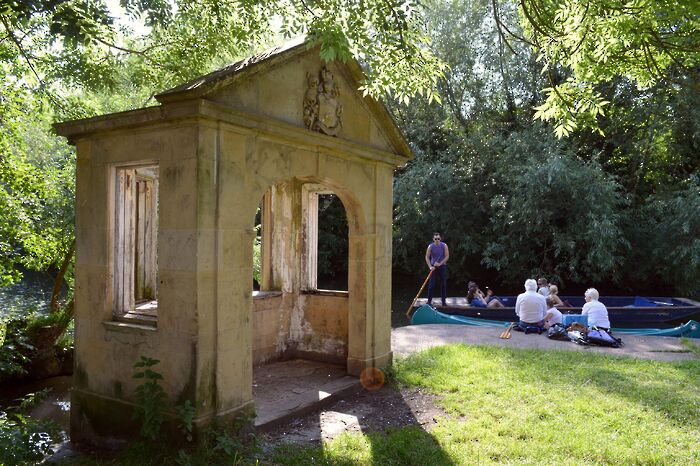Existential crises and light shows: four of Cambridge’s finest churches
More conservation than cardio, this walk will convert you to appreciate Cambridge’s central churches in a new light

First off, this walk encompassing four of Cambridge’s central churches is not for those interested in cardiovascular exercise: the journey from St. Bene’t’s on Bene’t Street to All Saints’ Church on Jesus Lane, via the Round Church and St. Clement’s on Bridge Street, takes all of 15 minutes. Some of course might hope to find spaces for the exorcism of those Exam Term demons on this route, but that’s not really me; rather, the question which launched this escapade is that of who or what exactly keeps these churches going, particularly in a part of town where most old property (colleges notwithstanding) has been gutted and refitted to the shiny standards of this or that retail Goliath. Christians is the obvious answer, but for how much longer in the town of Darwin, Hawking, text-a-toastie? Indeed, two of these churches have faced existential crises in their very recent history, saved only by conservation groups. I am hardly qualified to pass judgement on this question of survival, and that is not my intention: I merely wish to spread the word and – who knows – perhaps become a convert myself, one way or another, on the road

We begin with the oldest church in the city (the oldest building, in fact), and also perhaps the most unassuming: the petite St. Bene’t’s is to be found across the road from The Eagle and The Bathouse pubs, presumably offering a place of penitence to those who have had one too many spirits attenuated by the price of the Cambridge pint. Having stood here for some 1000 years, the church well predates the founding of the University, and even William’s conquest; it retains many of its Saxon features, including a three-tiered, cake-box style bell tower. Within one finds a modest space, sparsely decorated with memorial plaques, and with some sleuthing it’s possible to discern a blocked-off old passageway to the adjacent Corpus Christi, closed perhaps to prevent speedy supervision getaways.
En route from St. Bene’t’s to the ‘Round’ Church of the Holy Sepulchre, one may pass by the renowned Great St. Mary’s, unmistakable by dint of the congregation of punters who pester tourists in the shadow of its spectacular tower. Strikingly less vertical by comparison, the 12th century Round Church is technically now an exhibition centre, focusing on matters of local Christian history. Indeed, the space lends itself very well to perusal and observation: its panopticon style offers nowhere to hide from the eyes of the divine – or perhaps just the curious gaze of fellow visitors – and this point seems to be reinforced by the watchful faces that adorn its colonnettes.

Moving swiftly onwards to St Clement’s up the road, one encounters a church revitalised by current renovation. Though its exterior still bears the weather-beaten look of age – the doorway dates to the 13th century – the building may well have fallen into dilapidation, were it not for a recent grant. And thank God for that: the church’s interior in particular is worth seeing, originally designed entirely by Frederick Leach – Cambridge’s master decorator of the 19th century – and crowned by a radiant, imposing mural of his which survives on the east wall.

Double back now and onto Jesus Lane to find our last church, and my personal favourite. All Saints’ was designed by G.F. Bodley (of King’s Bodley’s Court fame) in the mid-19th century, and bears the marks of his penchant for Gothic revivalism: its spire needles sharply upwards to the city’s third-tallest point, rooted in a crenelated tower. But it’s on the inside that this church truly comes alive, its walls swimming with gold motifs, blooming with floral patterns; its stained glass windows, scarcely perceptible from the outside, provide a lightshow of hot reds and cool blues to rival any in Cindies. And yet All Saints’ has come closer than any of the other three churches to demolition: the prospect loomed ominously in 1979, as congregation sizes dwindled, only for the Churches Conservation Trust to rescue it two years later.
So one might answer my original question by pointing to charitable groups like these, their valiant efforts at preservation. But in truth of course these churches have saved, and shall probably continue to save themselves: their history and splendour ought to be bulwark enough against the hand of the corporate, even if that means an increasing and perhaps uncomfortable acceptance of their status as artefacts. And as for me? If this little walk has affirmed my faith in anything, it’s the value of stopping, looking, and inquiring into the world around us: I’ll certainly never stagger out of The Eagle and pass St. Bene’t’s in ignorance again.
 News / Uni offers students £55k in payouts31 October 2025
News / Uni offers students £55k in payouts31 October 2025 News / Uni error forces deeper spending cuts31 October 2025
News / Uni error forces deeper spending cuts31 October 2025 News / College rowing captains narrowly vote to exclude trans women31 October 2025
News / College rowing captains narrowly vote to exclude trans women31 October 2025 News / Students allowed to use AI, says new uni guidance31 October 2025
News / Students allowed to use AI, says new uni guidance31 October 2025 News / Students launch women’s society excluding trans women31 October 2025
News / Students launch women’s society excluding trans women31 October 2025










